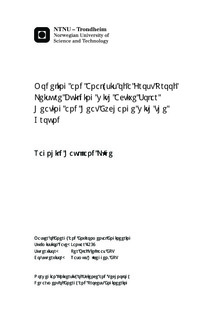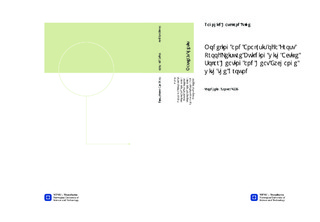| dc.description.abstract | Requirements regarding efficient energy use in buildings are becoming more and more strict. New ideas and technologies are constantly sought to face the challenge of reducing global CO2 emissions. The building sector accounts for a large part of energy use. The potential for more efficient energy use in this sector is significant and will also contribute towards reduced CO2 emissions. This master thesis is a continuation of a project work report written in collaboration with Ida Karin Auråen during the fall semester of 2012. A prototype of a leisure home was developed where sanitary installations were kept frost proof throughout the year without the use of primary energy. This was achieved by placing sanitary installations within well-insulated internal zones, and by using an active solar heating system and heat exchange with the ground. The goal of this thesis is to improve the model developed in the project work report. The main focus is to improve the design of the solar heating system to better approximate a realistic situation. Auråen s master thesis focused on the interaction between the leisure building and surrounding ground, and the ground model developed in her report is further used in this thesis.The leisure building consists of two floors and is constructed of poorly insulated log walls. Each floor has a thermally insulated internal zone where sanitary installations are deemed installed. The goal is to maintain frost proof conditions throughout the year within the internal zones to avoid damages to sanitary installations. The idea is to promote seasonal heat storage by storing heat collected during sunny periods in thermal mass located below the building. The desired effect is that the heat transfer is reversed during cold, dark winter months, so that stored heat is released upwards and into the leisure building, preventing formation of frost in the internal zones. The dynamic simulation tool ESP-r (Environmental System Performance Research) is used to analyze the leisure building. The interactions between the building and the ground are modeled using a submerged basement zone defined with a BASESIMP configuration. BASESIMP performs quasi 3-dimensional heat transfer calculations between a building and the ground. BASESIMP does not account for heat storage. The heat storage potential in the ground is analyzed through the internal ground floor construction. The floor is modeled as a thermally massive concrete slab with high density and high specific heat capacity. Heat storage calculations are performed based on heat stored in this concrete slab.The solar heating system is built up using the plants and systems network in ESP-r. The system contains three components; flat plate solar collector, circulation pump and hydronic floor. The hydronic floor component is a water-based floor heating circuit and is embedded within the concrete slab. Heat from the solar collector is transferred to the hydronic floor heating the slab below the internal zones. Towards the end of the winter, the remaining energy stored in the slab, and the incoming solar radiation injected to the slab, are too limited to make a significant heat contribution to the internal zones. Therefore, heat collected from January 1st to April 30th is injected directly to zone air of the internal first floor.The leisure home is planned located in southern mountain regions in Norway. ESP-r does not have available climate data for this area, and therefore climate data from Östersund, Sweden has been used as an approximation. The building has also been tested with climate data from Fornebu, Norway which is a typical coastal region in the south of Norway. Different parameters have been altered to optimize the model with regards to raising the minimum temperatures in the internal zones. Results show that the internal zones maintain much more stable conditions throughout the year than the outer zones. This shows that isolating sanitary installations within well-insulated internal zones can be a major advantage in the design process to reduce the amount of energy needed to keep the facilities frost free.A south-oriented solar collector with an area of 2 m2, and an slope of 70 ° achieves sufficient energy for frost proof conditions for both locations. The minimum temperatures in the internal ground- and first floor are 5.29 °C and 3.10 °C with Östersund climate data. The delivered energy from the hydronic floor component to the concrete slab, turns out to be 482 kWh with Östersund climate data, and 547 kWh with Fornebu climate data, with a collector efficiency of 68 %.Results show that heat collected in the spring and summer significantly affect the minimum temperatures occurring around mid-February in the following year. For further studies and optimization of the model, the interactions between the heat storage and surrounding ground should be studied more thoroughly. The effect which snow may have on the ground conditions should also be studied. Evacuated tube solar collectors are probably more suited for Scandinavian climate than flat plate collectors as used in this thesis. The plant database in ESP-r has no option to model evacuated tube collectors. The effect of such could be studied with another simulation tool. | nb_NO |

